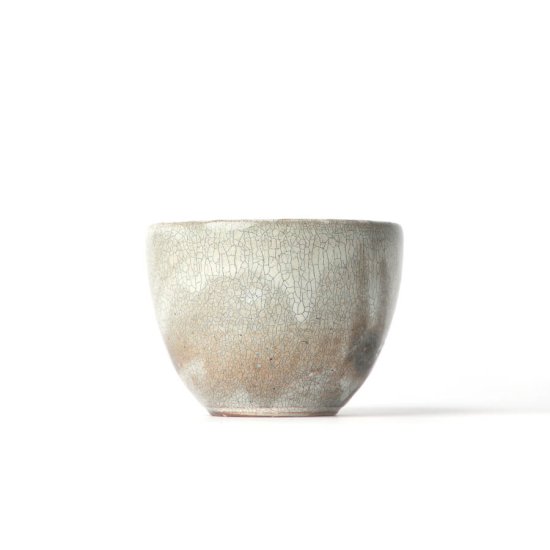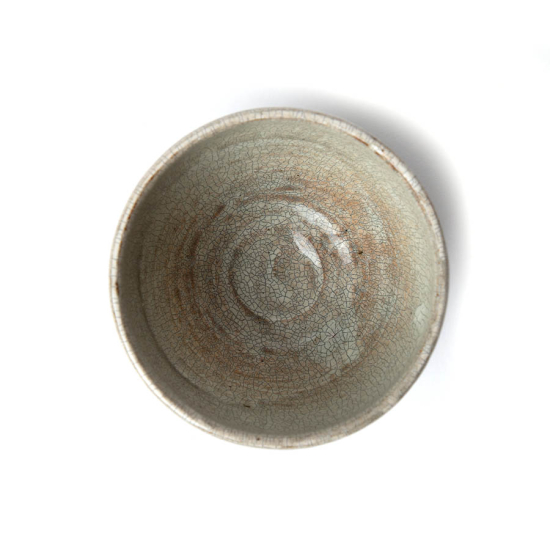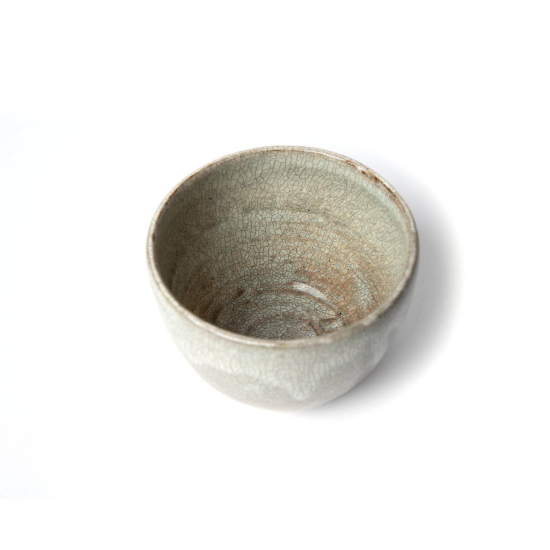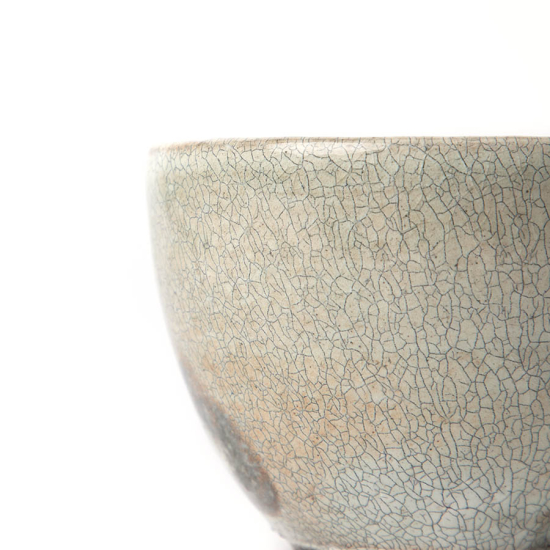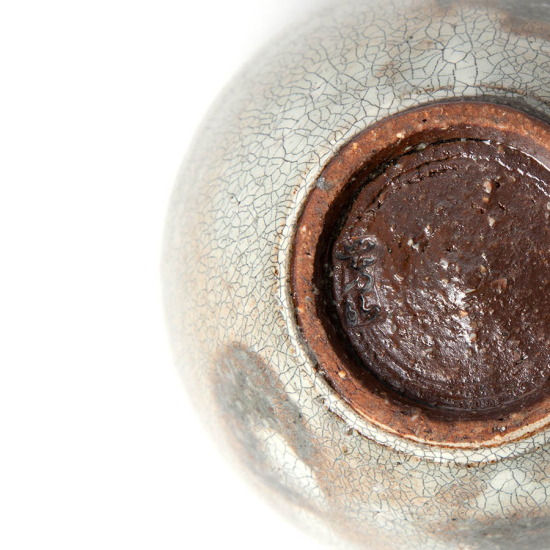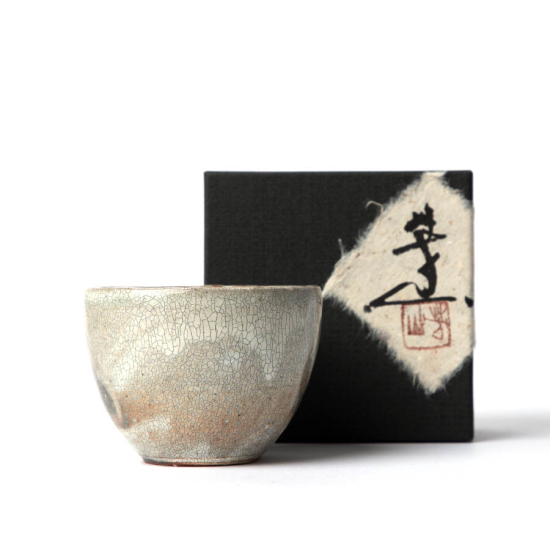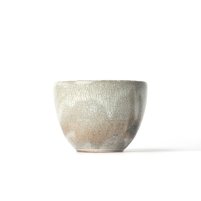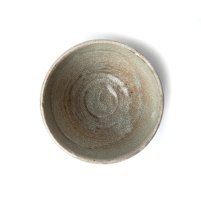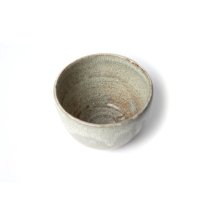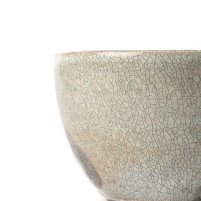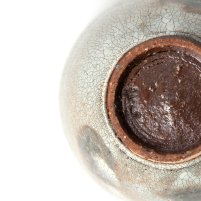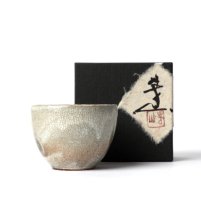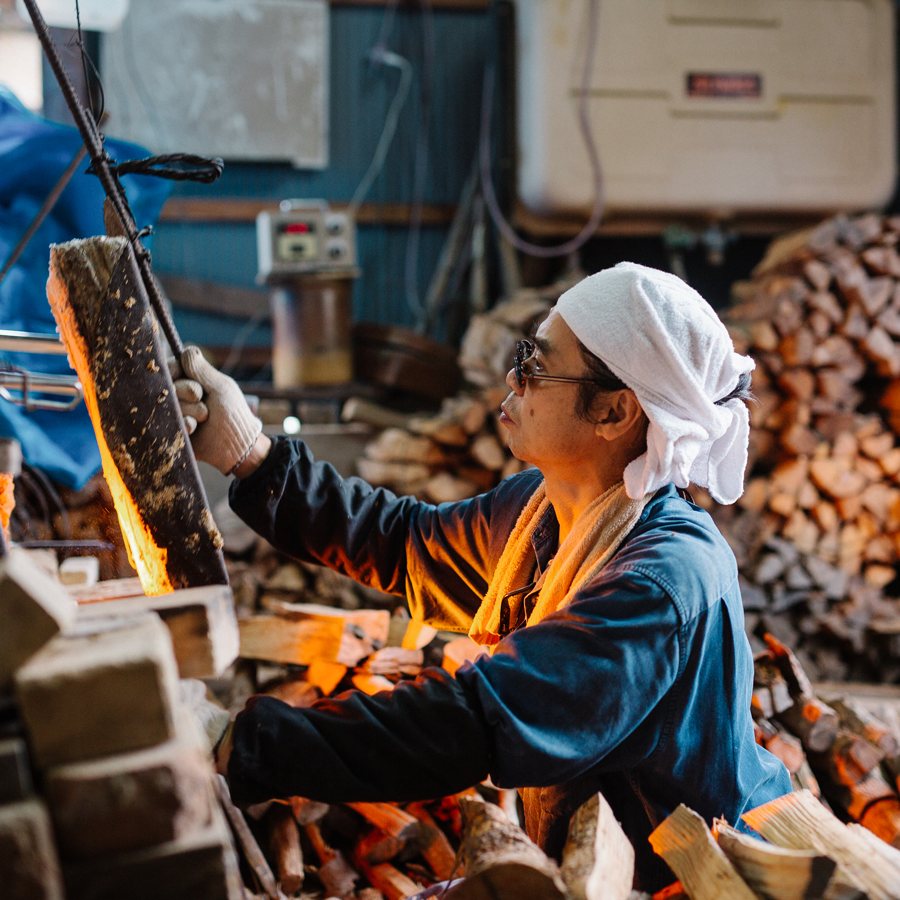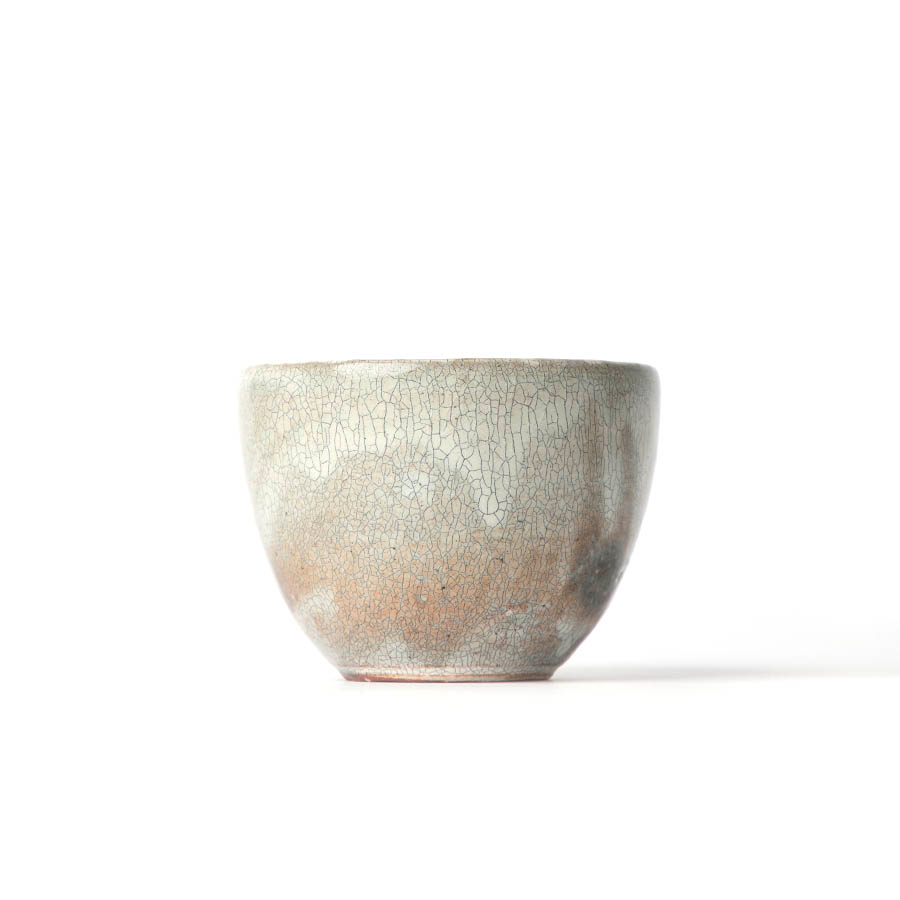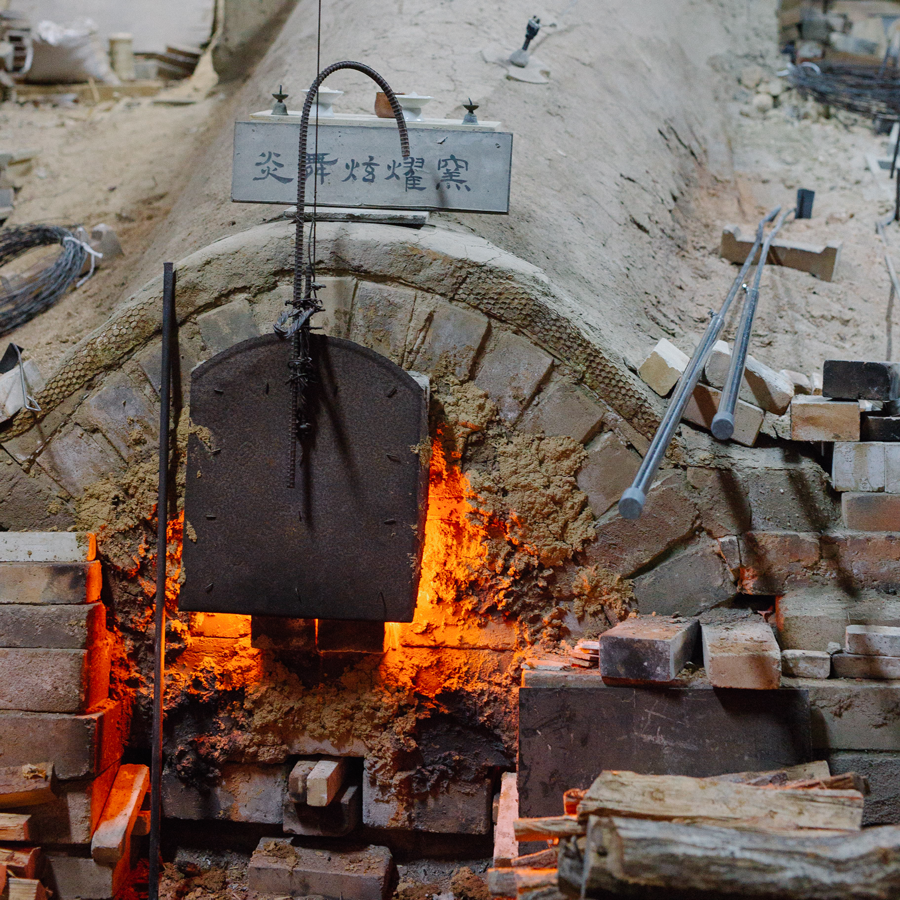Hand wash with warm water and a soft cloth or sponge, using a mild washing-up liquid as necessary. Do not put in dishwasher, microwave or oven.
Teacup Shigaraki
Hyosetsu Haku
Kumidashi II
Hozan Tanii
SKU
4814
Yoshi En has recently grown out of Sunday Natural to become an independent premium tea store. As part of this transition, some products may still be shipped in Sunday Natural packaging.
Like cracks on a frozen lake, this larger Kumidashi teacup is coated in a Hyosetsu (氷雪) "ice and snow" white glaze concocted by the contemporary Shigaraki-yaki potter, Hozan Tanii. Enjoy the changing Keshiki "scenery" of this cup as it slowly absorbs tea in the crackles over time.
| Product | Teacup, off-white |
| Artist | Hozan Tanii |
| Origin | Shigaraki, Shiga, Japan |
| Volume | 200ml |
| Dimensions | Ø8.8 x 6.7cm, foot Ø4.5cm |
| Weight | 166g |
| Material | Ceramic |
| Glaze | Wood ash glaze (木灰釉) |
| Decoration |
Yōhen ombré (窯変) |
| Artist's mark | Seal to base |
Each piece is handmade and unique, therefore size and finish may vary slightly
In stock



